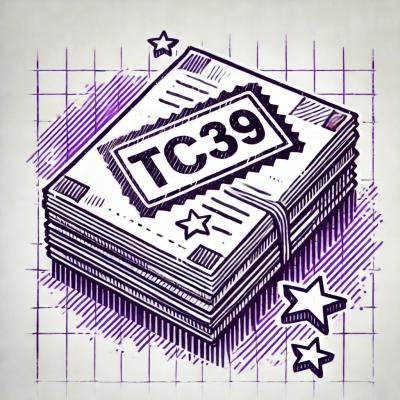Azure Document Translator Rest-Level client library for JavaScript
Azure Document Translator is a cloud-based feature of the Azure Translator service and is part of the Azure Cognitive Service family of REST APIs. The Document Translation API translates documents to and from 90 languages and dialects while preserving document structure and data format.
Note: This Rest Level Library targets Azure Document Translator service API version v1.0-preview.1.
Use the client library to:
| Translate large files | Translate whole documents asynchronously. |
| Translate numerous files | Translate multiple files to and from 90 languages and dialects. |
| Preserve source file presentation | Translate files while preserving the original layout and format. |
| Apply custom translation | Translate documents using general and custom translation models. |
| Apply custom glossaries | Translate documents using custom glossaries. |
Source code |
Package (NPM) |
API reference documentation |
Product documentation |
Samples
Getting started
Currently supported environments
Prerequisites
Install the @azure-rest/ai-document-translator package
Install the Azure Document Translator client library for JavaScript with npm:
npm install @azure-rest/ai-document-translator
Create a Document Translation resource
Document Translation supports [single-service access][single_service] only.
To access the service, create a Translator resource.
You can create the resource using
Option 1: Azure Portal
Option 2: Azure CLI.
Below is an example of how you can create a Document Translation resource using the CLI:
az group create --name my-resource-group --location westus2
az cognitiveservices account create \
--name document-translation-resource \
--custom-domain document-translation-resource \
--resource-group my-resource-group \
--kind TextTranslation \
--sku S1 \
--location westus2 \
--yes
Create and authenticate a DocumentTranslator
Looking up the endpoint
You can find the endpoint for your Document Translation resource using the
Azure Portal.
Note that the service requires a custom domain endpoint. Follow the instructions in the above link to format your endpoint:
https://{NAME-OF-YOUR-RESOURCE}.cognitiveservices.azure.com/
Using an API Key
The API key can be found in the Azure Portal or by running the following Azure CLI command:
az cognitiveservices account keys list --name "resource-name" --resource-group "resource-group-name"
Once you have an API key and endpoint, you can use the AzureKeyCredential class to authenticate the client as follows:
import DocumentTranslator from "@azure-rest/ai-document-translator";
const client = DocumentTranslator("<endpoint>", { key: "<API key>" });
Key concepts
The Document Translation service requires that you upload your files to an Azure Blob Storage source container and provide
a target container where the translated documents can be written. SAS tokens to the containers (or files) are used to
access the documents and create the translated documents in the target container. Additional information about setting this up can be found in
the service documentation:
DocumentTranslator
Interaction with the Document Translation rest library begins with an instance of the DocumentTranslation.
The client provides operations for:
- Creating a translation job to translate documents in your source container(s) and write results to you target container(s).
- Checking the status of individual documents in the translation job and monitoring each document's progress.
- Enumerating all past and current translation jobs with the option to wait until the job(s) finish.
- Identifying supported glossary and document formats.
Translation Input
To create a translation job, send a post request with body of type BatchSubmissionRequest to the "/batches/" path..
Creating a BatchSubmissionRequest requires that you pass the SAS URLs to your source and target containers (or files)
and the target language(s) for translation.
A single source container with documents can be translated to many different languages:
import { StartTranslationDetails } from "@azure-rest/ai-document-translator";
const batchSubmissionRequest: StartTranslationDetails = {
inputs: [
{
source: { sourceUrl: "<sas_url_to_source>" },
targets: [{ language: "fr", targetUrl: "<sas_url_to_target_fr>" }],
},
],
};
Or multiple different sources can be provided each with their own targets.
import { StartTranslationDetails } from "@azure-rest/ai-document-translator";
const batchSubmissionRequest: StartTranslationDetails = {
inputs: [
{
source: { sourceUrl: "<sas_url_to_source_A>" },
targets: [
{ language: "fr", targetUrl: "<sas_url_to_target_A_fr>" },
{ language: "de", targetUrl: "<sas_url_to_target_A_de>" },
],
},
{
source: { sourceUrl: "<sas_url_to_source_B>" },
targets: [
{ language: "fr", targetUrl: "<sas_url_to_target_B_fr>" },
{ language: "de", targetUrl: "<sas_url_to_target_B_de>" },
],
},
],
};
Note: the target_url for each target language must be unique.
See the service documentation for all supported languages.
Examples
Please refer to the samples folder to see code samples, including:
Troubleshooting
Logging
Enabling logging may help uncover useful information about failures. In order to see a log of HTTP requests and responses, set the AZURE_LOG_LEVEL environment variable to info. Alternatively, logging can be enabled at runtime by calling setLogLevel in the @azure/logger:
import { setLogLevel } from "@azure/logger";
setLogLevel("info");
For more detailed instructions on how to enable logs, you can look at the @azure/logger package docs.
Next steps
Please take a look at the samples directory for detailed examples on how to use this library.
Contributing
If you'd like to contribute to this library, please read the contributing guide to learn more about how to build and test the code.
Related projects



